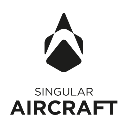FAQ
We are here to answer all your questions
With our current infrastructure, we can produce up to 50 aircrafts per year. However, we are constantly growing, and the final output will depend on the number of joint ventures and subsidiaries we stablish over time. These will strengthen our production in our main plant, increasing both capacity and workload. Our mid-to long -term goal is to reach a yearly production of 300 aircrafts.
Depending on the delivery location. The manufacturing and assembly time is approximately 4 months. To this, you would need to add the transportation time to the destination (1 month to any country in the American continent). Our aerial vehicle fits (90% assembled) inside a standard 40 ft container for easy transport.
Singular Aircraft DOES NOT AUTHORIZE the transport of people.
The Flyox I is a dual-use product, which means it requires export authorization from both the country of origin and import permits from the destination country.
An export license, issued by the Ministry of Economy and Competitiveness, is mandatory for goods subject to qualitative or quantitative restrictions in their country of origin.
As per the double-use nature, the authorities in the exporting country must be informed of the end user and the intended purpose of the RPA.
Prices vary significantly depending on the accessories installed and specific applications, as well as who supplies and installs said equipment.
As the Flyox is a fully customizable RPA designed to meet each client’s operational needs, we work on a turnkey project basis. We ask our clients for the intended use and required functionalities, and from there, we tailor the Flyox I accordingly.
The warranty is subject to the legislation of the destination country. For sales within the European Union, the warranty period is two years.
Periodic inspections every 150 flight hours or 1 year.
Unleaded gasoline 95 octane.
Beyond Line of Sight (BLOS) flight capability with integrated satellite link.
Pre-programmed flight capability.
Automatic and autonomous landing system in case of communication loss
Basic infrastructure of an aerial work operator: pilot, two mechanics, and a maintenance center. Additionally, mission specialists if necessary, such as camera operators, etc.
Yes, it is equipped with an automatic take-off and landing (ATOL) system.
Yes, at Singular Aircraft we train pilots and mechanics with programs that enhance their skills and operational safety.
It is capable of landing on paved and unpaved runways.
